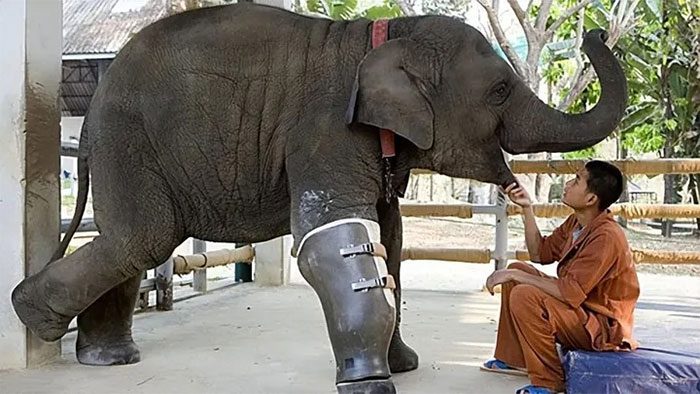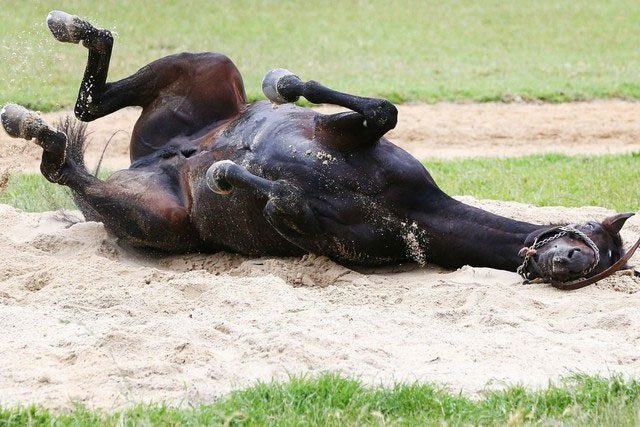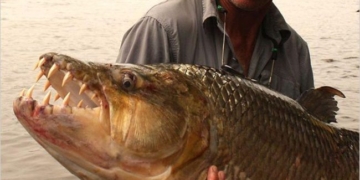The survival methods of all living things in nature are both strange and diverse, and the animal kingdom is filled with mysteries. An elephant can survive even with a broken leg, which raises many questions: Why does a horse have to die when it also breaks its leg?
The Healing Ability and Adaptation Mechanism of Elephants with Broken Legs
As one of the largest land animals, elephants possess remarkable self-healing capabilities and adaptation mechanisms, especially in cases of broken limbs or amputations.
The bone structure of an elephant is fundamental to its ability to heal wounds. Elephant bones are robust and intricately structured, allowing them to better support their weight and reduce the burden on other joints and bones when facing serious injuries like fractures. Additionally, elephant bones are rich in calcium and minerals, which help accelerate the healing process of fractures.

The bone structure of an elephant is fundamental to its ability to heal wounds.
The muscular system of elephants also plays a crucial role. Elephants have thick, strong muscles that provide enough strength to maintain balance and stability. When an elephant breaks a leg, the three remaining legs will share the entire weight through flexible muscle movement, thus reducing pressure on the injured leg. At the same time, the elasticity and resilience of elephant muscle tissue facilitate a smooth recovery process.
The intelligence and social nature of elephants also support their healing abilities. Elephants are highly intelligent animals with excellent memory and learning capabilities. When an elephant breaks a leg, other members will form a protective circle to provide safety and necessary support for the injured individual. Simultaneously, they cooperate to help their injured companions find food and water to ensure proper nutrition and speed up recovery.
Moreover, the adaptation mechanism of elephants is also crucial after a leg injury. Elephants can quickly adapt to new situations and environments, altering their behavior to fit their new physical state. For example, an elephant with a broken leg may rely more on its long trunk to find food and explore its surroundings instead of moving on all fours as usual. This adaptation mechanism allows elephants to maintain their survival capabilities and mobility as much as possible, even when they lose a limb.
The self-healing abilities and adaptation mechanisms of elephants are the result of a combination of many factors. Strong bones, healthy muscles, intelligent minds, and social behaviors enable elephants to survive severe injuries and continue living by adapting to new situations.

The intelligence and social nature of elephants also support their healing abilities.
Causes and Limitations Leading to Horses’ Difficulty in Healing Broken Legs
Horses have long been an important partner of humans, playing vital roles in agriculture, transportation, and even warfare. However, if a horse is injured and breaks its leg, healing becomes exceedingly difficult. This phenomenon has attracted widespread attention.
One of the main reasons why horses have difficulty healing broken legs is due to their unique bone structure. Horse leg bones are long and thinner than those of humans, making them relatively fragile. Once a fracture occurs, it is challenging for them to heal naturally. The weight of a horse’s body is often substantial, which places greater pressure on the broken leg, complicating the healing process.
Horses are herbivores and often need to run for extended periods to find food or escape predators. However, due to a broken leg, a horse cannot run normally, and the body’s weight shifts to the remaining legs, causing additional pain and pressure. In this case, the horse’s body struggles to recover, and the recovery time is significantly prolonged.
Treating a broken leg in horses typically requires significant resources, such as money, manpower, and medication. For farmers or ordinary people, investing such immense resources in treating a horse with a broken leg can be a heavy financial burden.

Due to their unique bone structure, when a horse breaks a bone, it is very difficult to heal.
Currently, treatment technology for horses with broken legs is still relatively limited and requires a team of professional veterinarians to perform diagnoses and surgeries. Such professional teams are not always available, especially in remote areas. Some advanced and expensive equipment and medications for the veterinary field also limit the effectiveness of treating broken legs in horses.
In addition to the above reasons, healing a horse’s broken leg is also challenging due to time constraints. Typically, the treatment of a broken leg in horses should be conducted as quickly as possible to increase the chances of recovery. However, due to the intervention of various external factors such as distance and economic conditions, the treatment time for horses with broken legs is often delayed. This increases the risk of infection, prolongs the healing time, and complicates recovery.
The difficulties in treating broken legs in horses are the result of a combination of multiple factors, such as the horse’s unique bone structure, limited mobility, resource constraints, and time limitations.


















































